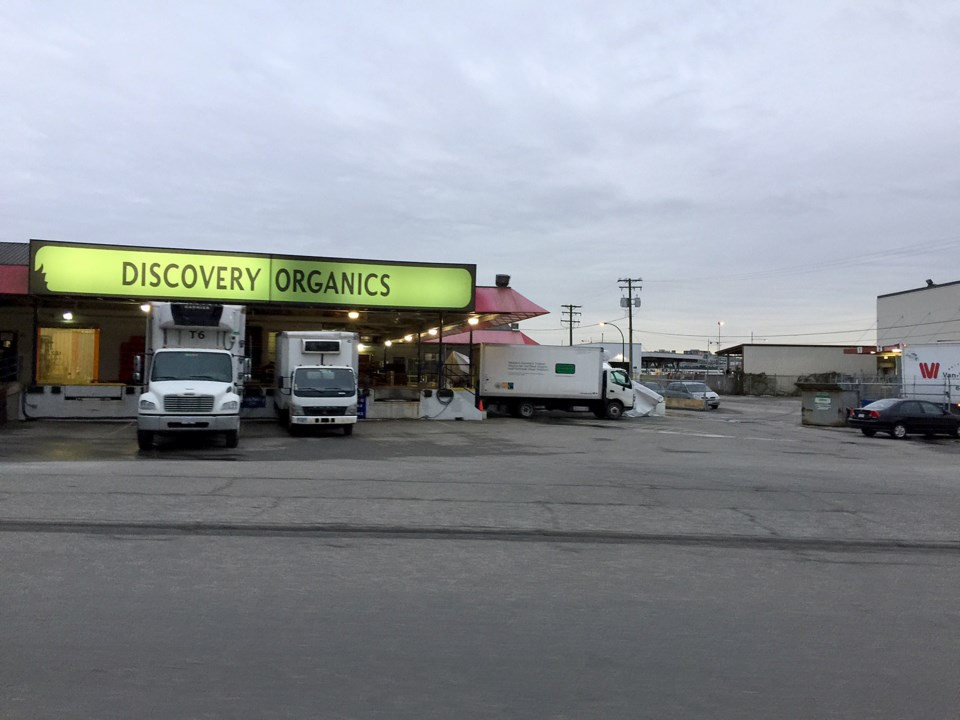Strong opposition from businesses along Malkin Avenue has prompted the introduction of a third possible connector route along William Street to redirect traffic east of Main Street once the Georgia and Dunsmuir viaducts are demolished.
“I think the city [council] would be playing with fire if they [chose] Malkin, because of the backlash,” said Kelly Ready, owner of Black Suns Gallery/Studio, which provides industrial art programs to disadvantaged youth.
Ready said he and several other area business owners would rather see anything but the Malkin connector option, which includes a train track overpass between Raymur Avenue and Clark Drive, aligning with Charles Street, that could negatively impact their businesses.
The Georgia and Dunsmuir viaducts were designed in the 1970s as part of a freeway system that was never built.
In October 2015, Vancouver City Council voted in favour of removing the viaducts. At the time, city staff presented council with two primary options for the new arterial route that would sit between Main Street and Clark Dr: a major thoroughfare along National or Malkin avenues – with National almost double the price tag of Malkin.
The William Street option, which staff had previously ruled out, was reintroduced after businesses in the area, particularly those along Malkin Avenue’s Produce Row, voiced their opposition.
Produce Row businesses move over $700 million worth of food annually to independent grocers, cruise ships and restaurants in Vancouver – as well as to other parts of Canada – and provide over 1,000 jobs in Vancouver.
“Produce Row is a critical part of our food economy and our economy in general,” said City of Vancouver Councilor Geoff Meggs. “So, an option [for the new arterial] has to be found that protects Produce Row.”
Three of the 12 Produce Row businesses will likely have to move if the William option is selected, said Damien Bryan, a spokesperson for Produce Row and general manager of Discovery Organics, a Produce Row wholesaler, but the Malkin route would probably signal an end to the entire Produce Row in Vancouver.
Bryan said National has been their preferred route, “but, ultimately, if the city [council] and parks board came to an agreement and it [the connector route] went down William Street, we would be supportive of that.”
Another hitch in the William connector plans is that it would cut into Strathcona Park.
A City of Vancouver report released in January 2017 notes that the proposed William Street expansion would have a significant impact on Strathcona Park, something that has received substantial pushback from nearby residents and members of community gardens.
“Losing a significant section of our [Strathcona] park to put in a new road only adds insult to injury,” commented Dan Jackson, a council member with the Strathcona Residents’ Association. He said the association would like the City of Vancouver to “figure out how to make National work, or find a way to compensate the community for the loss of green space.”
The Vancouver parks board is assessing the impact the proposed routes would have on park space and potential new allotments should sections be lost.
“Because the new [William connector] option goes through Strathcona Park, the parks board is going to have to look at alternatives to make sure the city doesn’t lose green space, and find different areas to maybe put green space,” said Vancouver parks board Chair Michael Wiebe.
Both the parks board and city council will vote on the three proposed connector routes: Malkin, National or William, before one is approved. Voting dates have yet to be scheduled.



